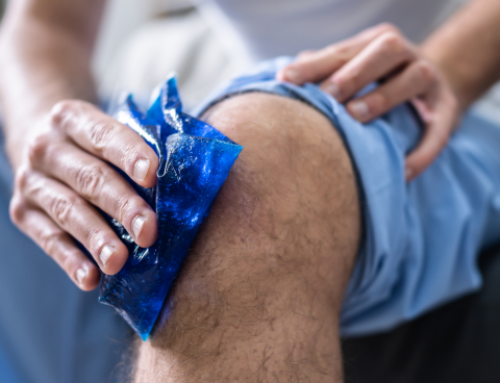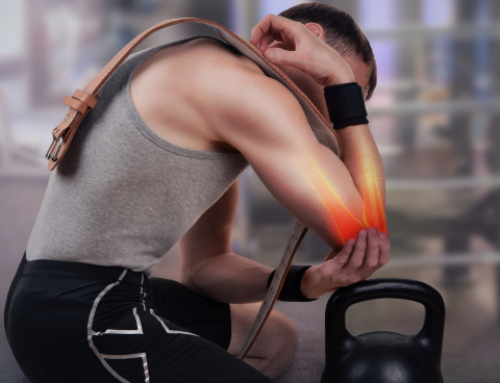Reducing Low-Back Pain: What You Need to Know
On average, 75 to 85 percent of Americans will suffer from low-back pain some time in their lives. It may result from a traumatic event such as a fall or motor vehicle accident, a degenerative disease, or maybe from poor movement patterns. It’s difficult to control the first two factors, but there are techniques that can be used to reduce and/or manage low-back pain.
Important note: the suggestions and exercises referenced in this article should not replace a diagnosis, treatment plan and rehabilitation program from a licensed medical professional; however, incorporating these strategies into your daily training routine could allow you to move and feel better, ultimately enhancing your training sessions and improving your athletic performance.
RELATED: Avoid Low–Back Pain With These 7 In-Season Exercises
Low-back pain may be defined as “involuntary localized muscle contraction or tension induced by pain, trauma or muscle inflammation.” People who suffer from low-back pain are unable to relax as a result of the pain-spasm-pain cycle, an occurrence where a spasm causes a cascade of pain, which in turn causes an increase in tension. This perpetual cycle may lead to increased pain, decreased function, and a potentially higher risk for soft-tissue related injuries. The cycle never “turns off,” effectively reducing range of motion and potentially inhibiting deep spinal stabilizers like the transverse abdominis, and prime movers such as the gluteus maximis.
In addition, in a situation where spinal stabilization is not optimal, tasks involving the extremities (e.g., walking, running, exercise) become increasingly difficult and inefficient, leading to decreased athletic performance. It is extremely important to identify movement restrictions, apply soft-tissue release and re-introduce reflexive techniques to normalize tone and encourage efficient movement patterns.
Foam Roll
Foam rolling is an effective form of self-myofacial release. It’s easy to perform and great at targeting specific areas. Perform a complete, total-body foam roll session that hits all areas, even if they were not tender or tight the day before. In doing so, you will not only be performing a quick full-body scan for tender areas, you will also be treating the body as a whole.
RELATED: How to Use Stretching and a Foam Roller for Lower Back Pain
“Belly” Breathing
Let’s face it, the vast majority of us don’t breathe correctly. Most of us breathe from our upper torso, shoulders and neck region, inappropriately using “movers” and synergists as accessory breathing muscles. This means when it comes time to move, those muscles are fatigued from breathing all day long.
Movement Preference
Once you’ve completed some soft-tissue mobilization and worked to normalize your breathing patterns, it is time to find gross movements that your body likes and those it doesn’t. You can perform these movements standing, seated or lying down (it may be best to start lying and work your way to seated and standing).
- Lying on your back, gently pull your knees into your chest, going as far as you can without pain or tightness, then return your legs to the outstretched starting position (repeat 3-5 times).
- Flip onto your stomach and gently press your chest off the ground into a “cobra” position (repeat 3-5 times).
- Sit up with your knees bent and feet hanging off a table; place your fingertips on your navel and slowly rotate to your left and right (repeat 3-5 times per side). What you are trying to do is identify unrestricted directions.
- Once you have your “best,” most unrestricted movement pattern, perform 3 sets of 30-second holds to the easiest side. Go as far as you can. Once you hit the first tissue barrier, hold that position, take a deep breath in through your belly, breathe out and move a bit further in that direction.
Spider Plank
This variation of a conventional Plank promotes a weight shift during lower extremity movement. At the same time, it encourages hip mobility preceded by core activation. Perform 3 sets of 10 repetitions per side. To ensure your low back is not hyperextended, maintain proper hip position.
RELATED: Build Core Strength with Challenging Plank Variations
Pointers
This exercise is a great way to promote transverse abdominis recruitment during opposite or reciprocal actions of the extremity. Perform 3 sets of 10 repetitions per side. Again, maintain proper hip position to ensure your low back is not in a hyperextended position.
The exercises described above take a whole-body approach to reducing low back tightness and decreased function. Simple soft-tissue work and breathing exercises can do wonders for improving range of motion and decreasing the sense of your back “giving out” when you pick up objects. As previously noted, it is ultimately important to seek appropriate medical attention when dealing with painful movements, decreased strength or function or radicular symptoms (tingling, numbness). This article and the exercises listed do not replace an appropriate medical evaluation and clinical diagnosis.
[cf]skyword_tracking_tag[/cf]RECOMMENDED FOR YOU
MOST POPULAR
Reducing Low-Back Pain: What You Need to Know
On average, 75 to 85 percent of Americans will suffer from low-back pain some time in their lives. It may result from a traumatic event such as a fall or motor vehicle accident, a degenerative disease, or maybe from poor movement patterns. It’s difficult to control the first two factors, but there are techniques that can be used to reduce and/or manage low-back pain.
Important note: the suggestions and exercises referenced in this article should not replace a diagnosis, treatment plan and rehabilitation program from a licensed medical professional; however, incorporating these strategies into your daily training routine could allow you to move and feel better, ultimately enhancing your training sessions and improving your athletic performance.
RELATED: Avoid Low–Back Pain With These 7 In-Season Exercises
Low-back pain may be defined as “involuntary localized muscle contraction or tension induced by pain, trauma or muscle inflammation.” People who suffer from low-back pain are unable to relax as a result of the pain-spasm-pain cycle, an occurrence where a spasm causes a cascade of pain, which in turn causes an increase in tension. This perpetual cycle may lead to increased pain, decreased function, and a potentially higher risk for soft-tissue related injuries. The cycle never “turns off,” effectively reducing range of motion and potentially inhibiting deep spinal stabilizers like the transverse abdominis, and prime movers such as the gluteus maximis.
In addition, in a situation where spinal stabilization is not optimal, tasks involving the extremities (e.g., walking, running, exercise) become increasingly difficult and inefficient, leading to decreased athletic performance. It is extremely important to identify movement restrictions, apply soft-tissue release and re-introduce reflexive techniques to normalize tone and encourage efficient movement patterns.
Foam Roll
Foam rolling is an effective form of self-myofacial release. It’s easy to perform and great at targeting specific areas. Perform a complete, total-body foam roll session that hits all areas, even if they were not tender or tight the day before. In doing so, you will not only be performing a quick full-body scan for tender areas, you will also be treating the body as a whole.
RELATED: How to Use Stretching and a Foam Roller for Lower Back Pain
“Belly” Breathing
Let’s face it, the vast majority of us don’t breathe correctly. Most of us breathe from our upper torso, shoulders and neck region, inappropriately using “movers” and synergists as accessory breathing muscles. This means when it comes time to move, those muscles are fatigued from breathing all day long.
Movement Preference
Once you’ve completed some soft-tissue mobilization and worked to normalize your breathing patterns, it is time to find gross movements that your body likes and those it doesn’t. You can perform these movements standing, seated or lying down (it may be best to start lying and work your way to seated and standing).
- Lying on your back, gently pull your knees into your chest, going as far as you can without pain or tightness, then return your legs to the outstretched starting position (repeat 3-5 times).
- Flip onto your stomach and gently press your chest off the ground into a “cobra” position (repeat 3-5 times).
- Sit up with your knees bent and feet hanging off a table; place your fingertips on your navel and slowly rotate to your left and right (repeat 3-5 times per side). What you are trying to do is identify unrestricted directions.
- Once you have your “best,” most unrestricted movement pattern, perform 3 sets of 30-second holds to the easiest side. Go as far as you can. Once you hit the first tissue barrier, hold that position, take a deep breath in through your belly, breathe out and move a bit further in that direction.
Spider Plank
This variation of a conventional Plank promotes a weight shift during lower extremity movement. At the same time, it encourages hip mobility preceded by core activation. Perform 3 sets of 10 repetitions per side. To ensure your low back is not hyperextended, maintain proper hip position.
RELATED: Build Core Strength with Challenging Plank Variations
Pointers
This exercise is a great way to promote transverse abdominis recruitment during opposite or reciprocal actions of the extremity. Perform 3 sets of 10 repetitions per side. Again, maintain proper hip position to ensure your low back is not in a hyperextended position.
The exercises described above take a whole-body approach to reducing low back tightness and decreased function. Simple soft-tissue work and breathing exercises can do wonders for improving range of motion and decreasing the sense of your back “giving out” when you pick up objects. As previously noted, it is ultimately important to seek appropriate medical attention when dealing with painful movements, decreased strength or function or radicular symptoms (tingling, numbness). This article and the exercises listed do not replace an appropriate medical evaluation and clinical diagnosis.
[cf]skyword_tracking_tag[/cf]











